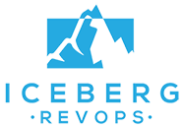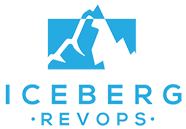- The Benefits of PLG at a Glance
- More Efficient Sales Process: introducing Product-Led Sales (PLS)
- Improved Product Roadmaps
- Predict Churn with more Accuracy
- Shorter Time-to-Value (TTV)
- Optimize Customer Acquisition
- Lower Customer Acquisition Cost (CAC)
- Do You Have the Infrastructure to Support PLG? Find Out Where to Start
More B2B buyers want the B2C experience: side-step the traditional sales-led approach and experience the product for themselves before deciding to upgrade or not. Enter product-led growth, a strategy that focuses on driving user adoption and product usage to fuel sustainable growth.
The companies who get it right will be light years ahead of their competitors.
In a product-led growth approach, the product itself becomes the primary driver of customer acquisition, conversion, and retention. And it’s not just the buzzword in B2B – it’s a proven method that has helped companies like Slack, Zoom, and Dropbox achieve massive success.
So why does product-led growth work? For one, it puts the user front and center. By aligning efforts on delivering a great product experience and continually improving it (thanks to the right data), you create a loyal user base that turns growth into a flywheel.
But here’s the catch: product-led growth is not a silver bullet. It requires a fundamental shift in mindset and company culture. It means placing a greater emphasis on product development and user experience, and being willing to iterate and pivot based on user feedback. It means rethinking how you measure success and being willing to let go of metrics that no longer matter.
The plunge to building a successful PLG strategy isn’t easy, but these are the rewards for those willing to put in the work.
The Benefits of PLG at a Glance
- More Efficient Sales Process: introducing Product-Led Sales
- Improved Product Roadmaps
- Predict Churn with Better Accuracy
- Shorter Time-To-Value (TTV)
- Optimize Customer Acquisition
- Lower Customer Acquisition Costs (CAC)
More Efficient Sales Process: introducing Product-Led Sales (PLS)
There’s a big misconception that PLG means “no sales.” That couldn’t be more untrue. Modern GTM strategies require multiple sales motions, and more companies are embracing a hybrid sales strategy.
New business comes to sales in a variety of ways: MQLs, inbound enquiries, cold outbound, and now the product itself (in the form of PQLs).

Image Credit: Pocus 2022 PLS Benchmark Report
In PLS the sales team are becoming less involved in closing new logos and more active in account expansion, which may mean rethinking your compensation plans. Users generally onboard themselves through a self-service funnel and sales get involved in the opportunities that would benefit most from human interaction.
To identify those opportunities, you need to rethink how you’re scoring leads. A great PLS motion means scoring leads based on product usage data and enriching it with other data points like company size, industry, role, etc. to identify the best leads (PQLs) to route directly to your reps. This new system of lead scoring means sales are speaking with people who are already using your product. That’s an easier deal to win than cold outreach to executives who have no idea who you are.
Taking things a step further, scoring product-qualified accounts (PQAs) can have an even bigger impact. These are users which show high-revenue potential, such as possible enterprise users. For example, Microsoft might become a PQA when 10 users are added to an account with a Microsoft email account.
Given that PQLs and PQAs are helping sales teams spend more time selling and winning opportunities, it’s not surprising that PLS is catching on.
A report by Pocus found that 49% of PLG companies surveyed already have a PLS motion in place. A small percentage (6%) have even started giving ownership of this specific motion to members of their sales team.
Improved Product Roadmaps
Nothing derails a product roadmap more than developing features that your users don’t want or need. Tracking the right product data and using it to fuel PLG means you’re able to identify issues with your product: where are users struggling? What features are they not adopting? What features are they using the most?
Analyzing product data like this gives you a much more data-driven approach to building out your product roadmap. Sure, you can also use user interviews, surveys etc, but what people say they do and what they actually do aren’t always the same thing. Trust the data.

Mickey Alon
Chief Technology Officer of PX, Gainsight
Predict Churn with more Accuracy
Your company is probably tracking logo churn, but how well is it doing at predicting it? Understanding your churn rate is important, but predicting it and setting up plays to prevent it, is far more proactive. HubSpot VP of Services, Jonah Luopin reminds us that “if churn is your only rate of customer happiness, you’re always at least six months too late to influence your future. By the time you see an increase in churn, it’s 6-8 months after you actually failed the customer.”
That’s why 36% of PLG companies surveyed by Gainsight actively use product data to predict churn. We hope more will catch up.
It’s impossible to predict churn without product data, so if retaining customers is a priority then it’s time to analyze product data.
Here are some common product signals to potentially add to your churn prediction model.
-
Customers whose session count (number of logins) is declining when compared to previous periods
-
Customers whose use of the product has declined over the last period (high risk of churn)
-
Customers who signed up but did not complete on-boarding (high risk of churn)
-
Customers who have never sent a support ticket (high risk of churn)
Shorter Time-to-Value (TTV)
Time-to-Vale is how long it takes a user to experience value from your product after using it. “Value” can be a number of things: create a document, get an e-signature, send 10 messages in-app etc. The faster you can get a user to experience value from your product, the faster they’ll convert to a paid account.
In a self-service funnel, your users no longer require a sales team to guide them through the software and get value from it: it’s now up to the product itself to deliver. That means analyzing multiple data sources to pinpoint at what moment users find value from the product and where they drop-off during the onboarding process.
Some common ways to measure TTV include:
-
How long it takes for customers to upgrade their plan: the shorter this metric is, the more likely it is that your users are experiencing value early-on with the product
-
Length of onboarding process: the longer your onboarding process, the more likely it is that your users are experiencing a longer TTV
-
Feature adoption rate: how quickly are core features being adopted? The shorter this is, the better job you’ve done with your onboarding process and helping users achieve a short TTV
If your product is complex, requires configuration etc. you’ll need to invest heavily in in-product enablement for your users. The more complex your product is, the bigger investment you’ll need to make in teaching users how to use it as they self-onboard.
Optimize Customer Acquisition
Who would rather have to take time out of their day to get a demo when they could simply click “start for free”, trial the product themselves, then make a decision about whether or not they want to move forward?
PLG-friendly calls-to-action like “Start a free trial” don’t just make life easier for the end-user, but also for the company. It’s a frictionless way to get your foot in the door and expand later. You can use in-app data like what features have been adopted, what type of company the user is from, their role etc to personalize their experience with the product.
For example, we’re all familiar with the time-based email triggers when we sign up to a new product. The problem with these is that they completely ignore what you’re actually doing in the product. One email might be telling you about a feature you’ve already used. Or a use case that doesn’t apply to you. Mixpanel uses in-app behaviors to trigger targeted email campaigns during onboarding. For example, if a user hasn’t completed an action after a certain amount of time, Mixpanel can send them an email reminder to finish that task, along with tips to help them succeed.
Lower Customer Acquisition Cost (CAC)
More companies are embracing PLG for another reason: the rising costs of acquiring users. Digital advertising in particular is becoming steadily more expensive and less sustainable, especially for early-stage startups.
“In the last two years, the creep of large ad agencies and corporations has had its impact. When Unilever or McDonald’s takes $20 million of their usual TV and radio ad budget and plows it into Facebook, it’s going to shake things up for small businesses,” says Meta lead trainer, Dante St James. A mixture of rising advertising costs and the expense of hiring a great sales team, means more companies have turned to PLG to reduce their CAC.
While you might use some inbound marketing or outbound sales to bring users through the door, the product nurtures them, allows them to self-serve, and acquires more users. This is commonly known as the “Product-led-Growth Flywheel”.

Image Credit: ProductLed
For example Indy, a software for freelancers, does this flywheel well.
- The CTA is the PLG-friendly “start a free trial”
- The user is prompted to answer a few simple questions about their business, which helps personalize the onboarding experience
- The user is then prompted by an in-app walkthrough that shows them how to use the core features
- The user reaches TTV when they complete a key action like creating their first contract or proposal
- Their onboarding experience is assisted by personalized emails which remind them to complete any actions they’ve started (like starting a contract, but not sending it to the client). Or celebrate actions they have completed (like created an invoice) and prompt them to take the next step
- There’s a limited time offer given to the user once they hit their TTV, incentivizing them to upgrade. This is particularly smart as once the user has reached TTV they’re more likely to purchase, especially with an offer
- Once they upgrade they are prompted to share the software on social media or via email. Indy leverage the affiliate marketing model of offering the user a free month for each new user that signs up with their link
That entire process might take as little as 30 minutes. They’ve effectively lowered their CAC by incentivizing users to become advocates of their product early-on and by nurturing them in the product.

Do You Have the Infrastructure to Support PLG? Find Out Where to Start
It’s clear that PLG can offer immense benefits to the right company, but it’s too easy to get caught up in metrics and tactics and lose sight of the bigger picture.
For any PLG motion to be a success, you need a roadmap in place. You’ll need to consider your goals, the key metrics that will measure success, invest in the right technology and tools, and establish a company culture that prioritizes product (a big shift for many companies).
As RevOps consultants, we’ve helped dozens of companies successfully build and optimize their PLG strategy. From creating a vision for your PLG motion to identifying key metrics and implementing the right tools and processes, we create a plan that everyone from product to marketing can get on board with.
Next Steps

See How We’ve Helped Companies Like Yours
We’re a RevOps agency that takes early-stage companies from barely getting by to systems and processes that fuel revenue growth.

Want to Build Your PLG Tech Stack?
Make your tech stack work like you have a full RevOps team—even when you don’t.


